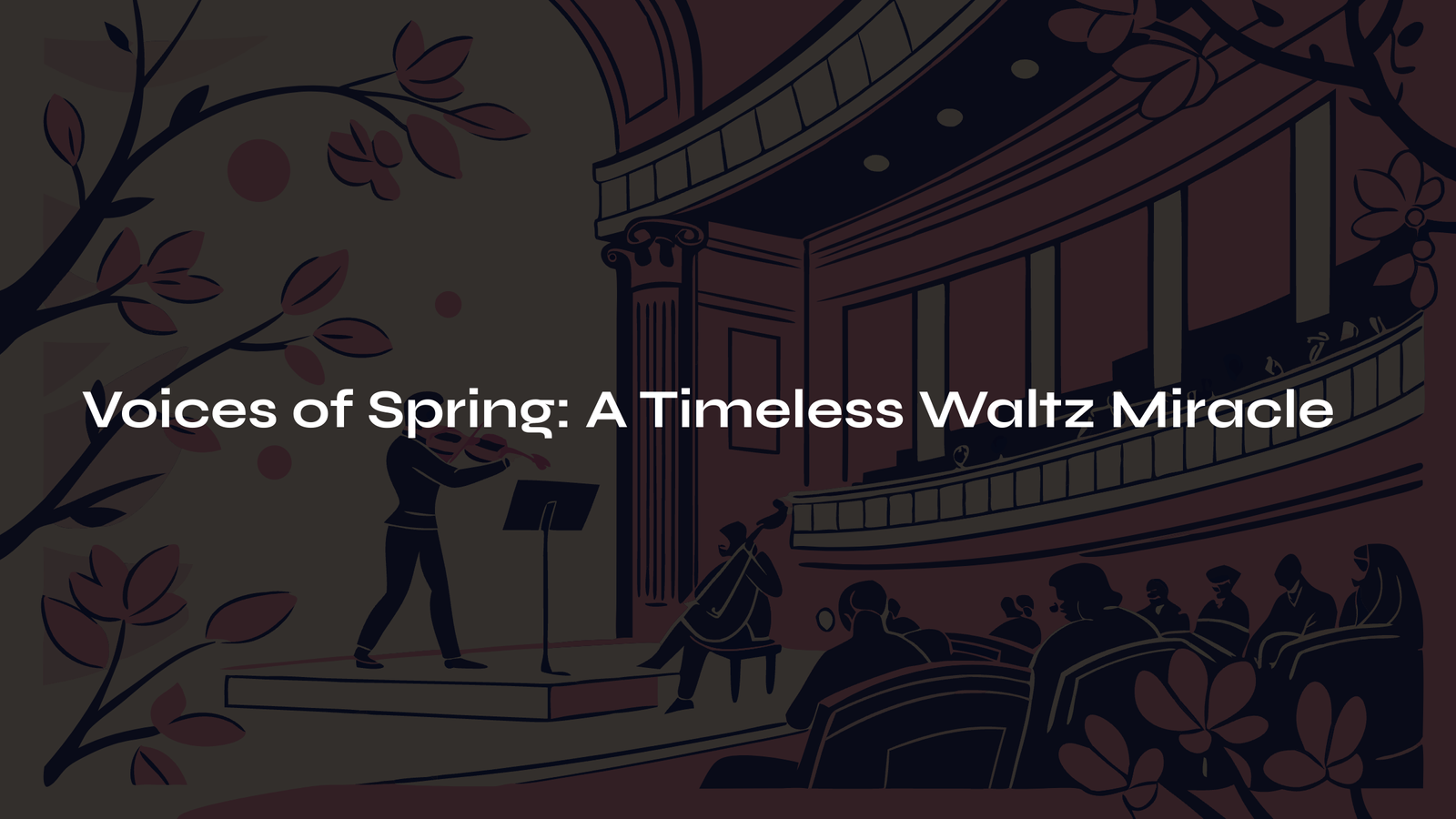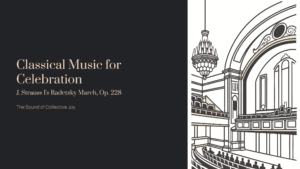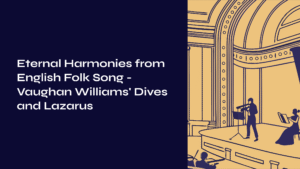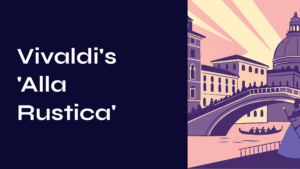Table of Contents
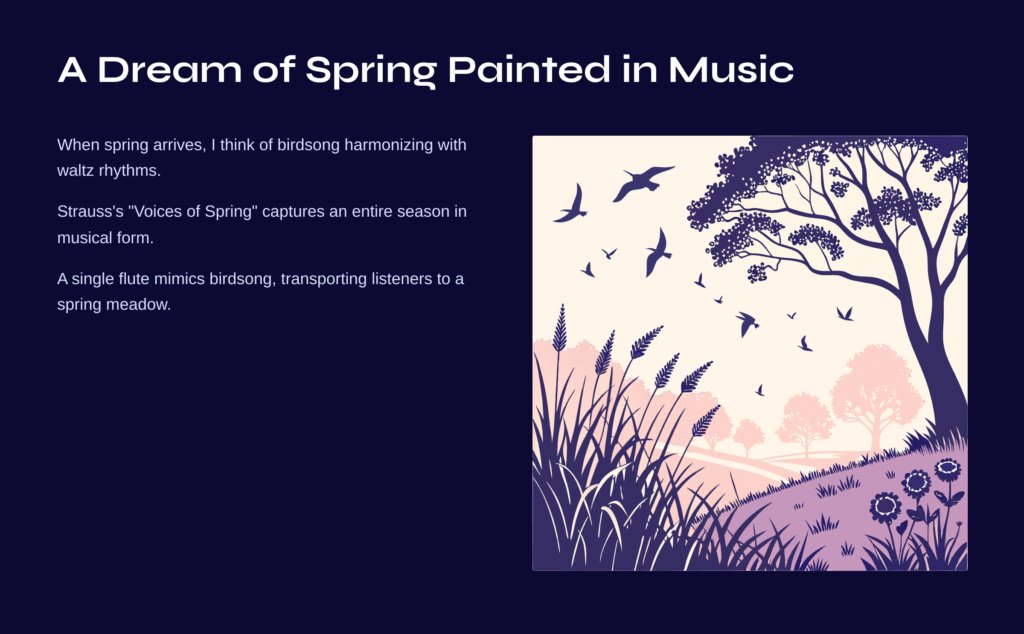
A Dream of Spring Painted in Music
When spring arrives, I always think of the same music. It’s those fantastical moments when birdsong harmonizes with waltz rhythms to create something magical. When I first heard Johann Strauss II’s “Voices of Spring (Frühlingsstimmen)” Op. 410, I understood how music could capture an entire season. This isn’t just a waltz—it’s a miraculous work that transforms spring itself into musical notes.
Within the pastel-toned soundscape created by the full orchestra, a single flute mimics birdsong. In that moment, the concert hall vanishes, and we find ourselves standing in the middle of a spring morning meadow. This is the magic that Strauss gifts us.
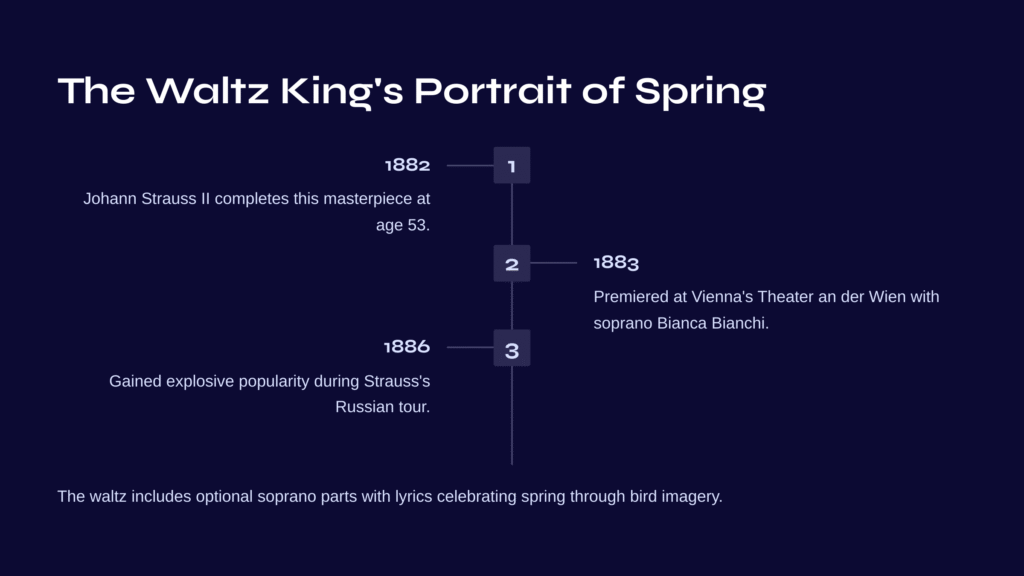
The Waltz King’s Portrait of Spring
In 1882, Vienna’s Waltz King Johann Strauss II completed this masterpiece at age 53. He had already enchanted the world with “The Blue Danube,” but in “Voices of Spring,” he displays an even more mature musical insight. The piece was dedicated to pianist-composer Alfred Grünfeld and premiered in 1883 at Vienna’s Theater an der Wien, with soprano Bianca Bianchi’s voice bringing it to life.
Interestingly, this work didn’t receive much attention initially. However, it gained explosive popularity during Strauss’s 1886 Russian tour and finally received the recognition it deserved. Sometimes music needs time to find its moment—just as spring is most beautiful when it arrives in its proper season.
This waltz optionally includes soprano solo parts, with Richard Genée’s German lyrics celebrating spring’s awakening through bird imagery. Yet even as an orchestral piece alone, it perfectly conveys all the emotions of spring without needing words.
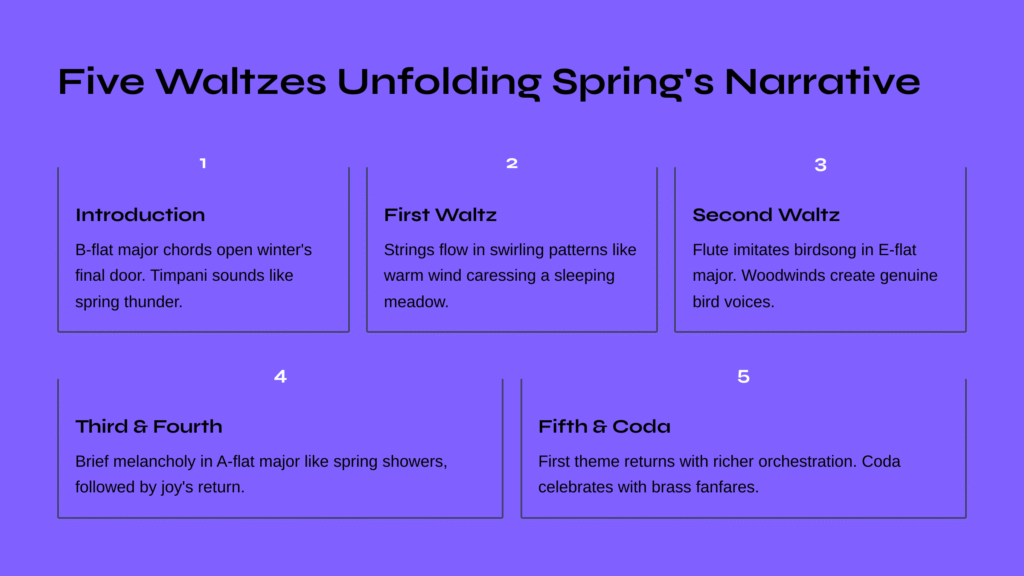
Five Waltzes Unfolding Spring’s Narrative
Introduction: The Signal for Spring
The brief 8-bar introduction feels like opening winter’s final door. When B-flat major’s dramatic chords ring out majestically, we know we’re ready to dance. The timpani’s resonance in this moment sounds like spring thunder awakening the earth.
First Waltz: Gentle Awakening
The 16-bar opening theme begins in B-flat major. The strings’ gentle melody flows in swirling patterns, like warm wind caressing a sleeping meadow. This melody serves as the piece’s foundation, offering the warmth of a home we can always return to.
Second Waltz: The Birds’ Chorus
When the key shifts to E-flat major, real magic begins. The flute obbligato imitates birdsong while presenting a pastoral theme. As string triplets support the waltz’s lightness, the woodwinds’ bird voices feel genuinely alive. Whenever I hear this section, I want to open a window.
Third Waltz: Spring Rain Memories
The third waltz begins in A-flat major, entering a momentarily melancholic mood. The brief turn to C minor feels like sudden spring showers. But this melancholy doesn’t last long—spring’s sadness is always brief and beautiful.
Fourth Waltz: Joy’s Return
Returning to A-flat major, the cheerful atmosphere is restored. This section feels like clear skies after rain. The rich harmonies created by the full orchestra brighten the heart.
Fifth Waltz: Return to Origins
The first waltz’s theme returns in B-flat major, but now colored with richer orchestration. Though it’s the same melody, it feels completely different because we’ve journeyed alongside the music.
Coda: Spring’s Jubilation
The approximately 32-bar coda is a true celebration. With brass fanfares, timpani drum rolls, and a brilliant B-flat major conclusion, the entire orchestra unites to sing spring’s joy.
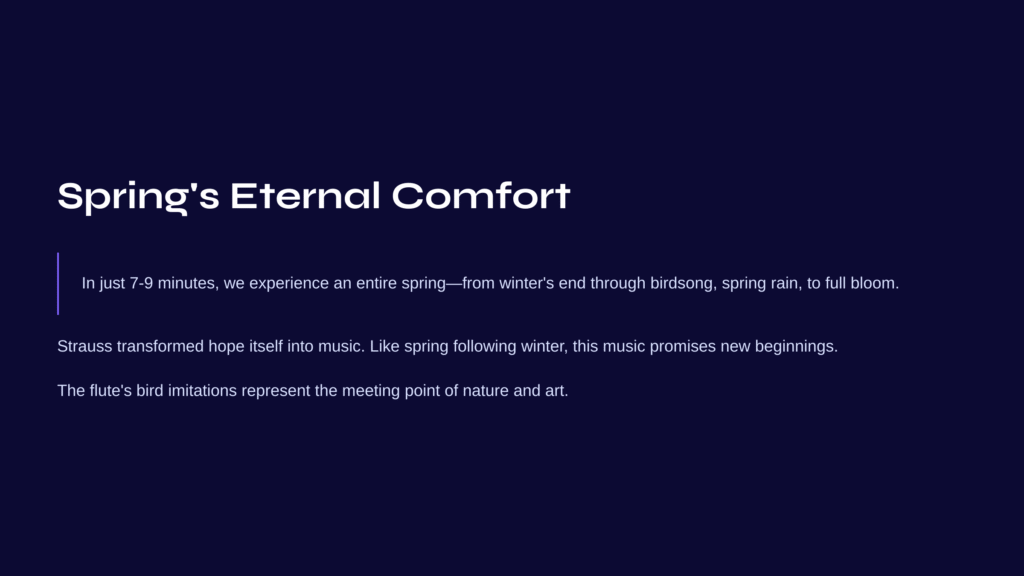
Spring’s Eternal Comfort
Each time I hear this piece, I contemplate how music handles time. In just 7-9 minutes of performance, we experience an entire spring—from winter’s end through birdsong, spring rain, to the full bloom of spring days.
Strauss didn’t merely depict a season; he transformed hope itself into music. Like spring that inevitably follows winter’s dark, long end, this music speaks to us: no matter how difficult the times, there will always be new beginnings.
The flute’s bird imitations aren’t mere mimicry. They represent the meeting point of nature and art, the completion of a cycle where humans return nature-inspired creativity back to nature itself.
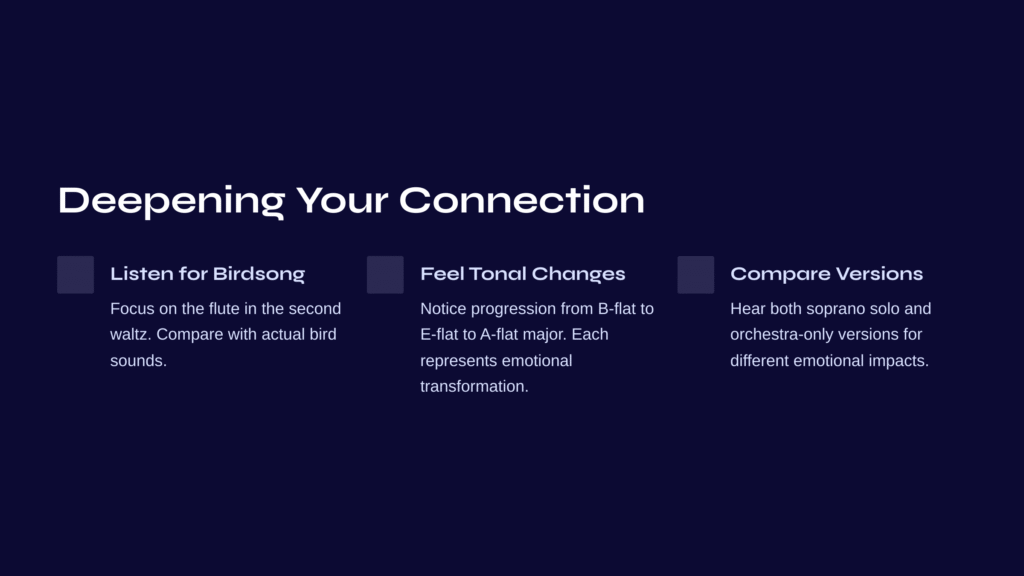
Deepening Your Connection with Voices of Spring
When listening to this piece, I recommend focusing on several key points. First, pay attention to the flute’s birdsong in the second waltz. Comparing it with actual bird sounds reveals how keen Strauss’s powers of observation were.
Also, feel the tonal changes between each waltz. The progression from B-flat major to E-flat major to A-flat major isn’t merely technical—it represents emotional transformation.
If you have the opportunity to hear multiple versions, compare those with soprano solo to orchestra-only versions. You’ll discover that each offers a different quality of emotional impact.
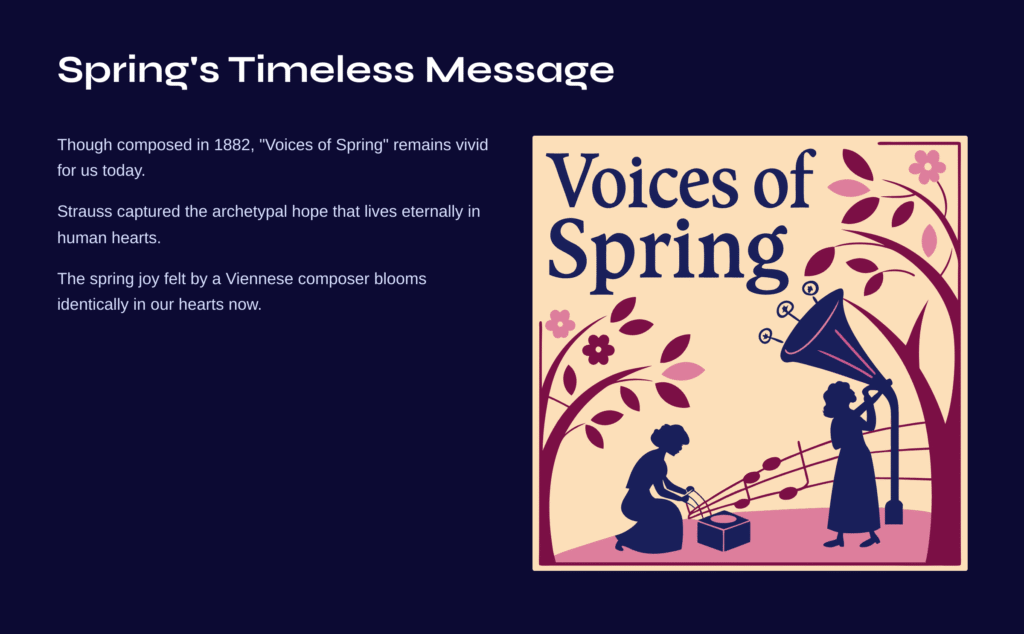
Spring’s Timeless Message
Though “Voices of Spring” was composed in 1882, it remains vivid for us in 2025. Despite technological advances and global changes, spring’s emotional impact remains constant. What Strauss captured wasn’t simply seasonal scenery, but the archetypal hope that lives eternally in human hearts.
Every time I hear this waltz, I’m convinced that music transcends time. The spring joy felt by a Viennese composer over 140 years ago blooms identically in our hearts at this very moment. And it always will, as long as people await spring, listen to birdsong, and surrender their hearts to waltz rhythms.
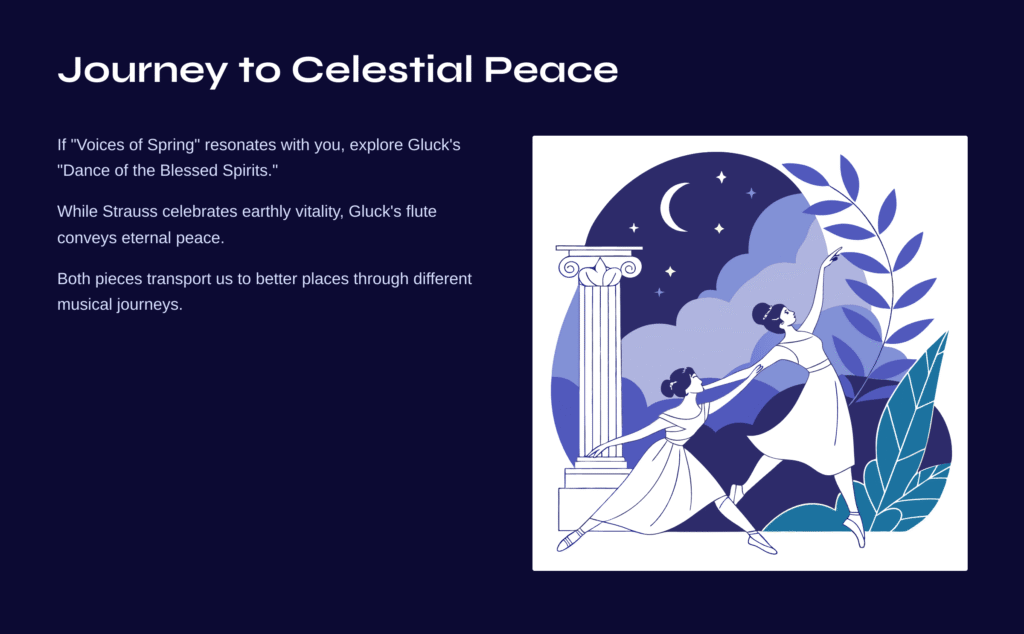
If This Music Speaks to You: A Journey to Celestial Peace
If “Voices of Spring’s” joyful dance resonates with your heart, let’s embark on a different kind of dance journey. Christoph Willibald Gluck’s “Dance of the Blessed Spirits” (from the opera *Orfeo ed Euridice*) offers beauty from an entirely different dimension than Strauss’s earthly joy.
If “Voices of Spring” is a dance in sun-drenched meadows, Gluck’s piece is the quiet waltz of souls in celestial fields. This famous scene from the 1762 Baroque opera plays when Orpheus, searching for his beloved Eurydice, reaches the dwelling place of blessed spirits beyond the realm of death.
Led by a single flute, this dance piece shows極度に抑制された美しさを見せる beauty that’s the complete opposite of Strauss’s brilliant orchestration. Yet the emotion contained in its simplicity runs deeper than any complex composition. While Strauss’s birdsong celebrates earthly vitality, Gluck’s flute conveys the breath of eternal peace.
Listening to both pieces consecutively reveals fascinating contrasts. One depicts life’s jubilation, the other the tranquility beyond death. Yet both ultimately speak the same truth: music transports us to better places.
